Sightseeing Spots
Search Results314
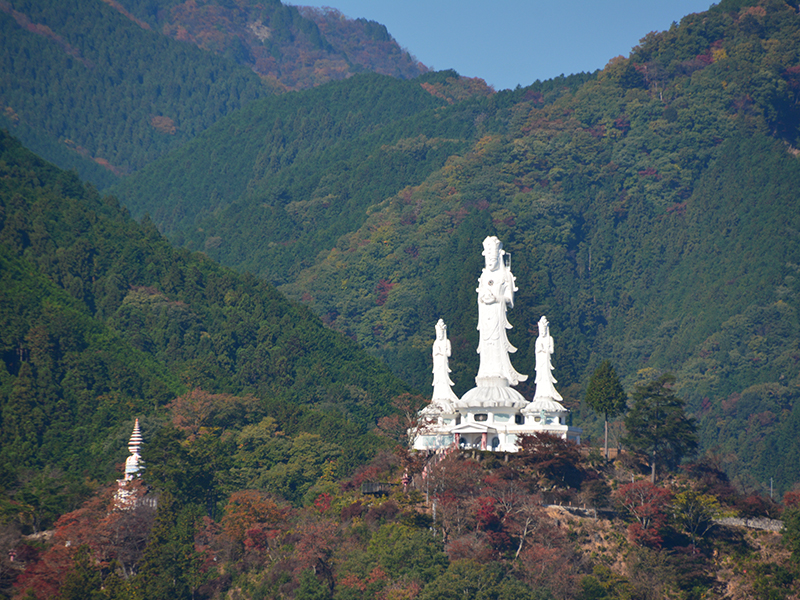
Selected as one the top 100 locations in Saitama, the Mt. Hakuun (Hakuun-san) Torii Kannon temple covers an area of around 30 hectares (the size of 6.5 Tokyo Domes) in Okumusashi/Naguri, where founder Yataro Hiranuma spent over 30 years erecting buildings in various places on the mountain. In addition to the symbolic Kusei Kannon (Goddess of Salvation) on the mountain summit, there is also the main hall, Gyokkamon Gate, Niomon Gate, Great Bell Tower, Heiwa Kannon (Goddess of Mercy), and notably the Genjo Sanzo Tower, famous for enshrining the remains of Genjo Sanzo, a Buddhist priest who appears in the famous Chinese novel "Journey to the West."
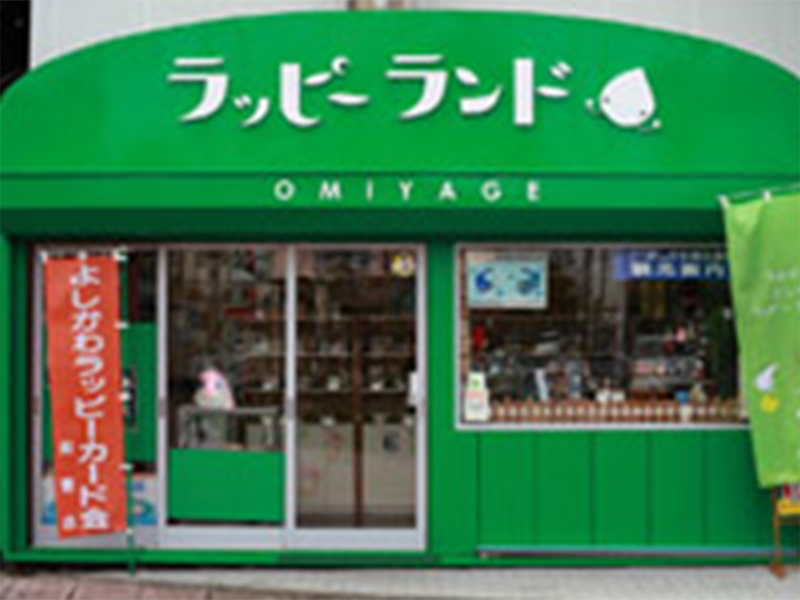
Located at the Yoshikawa Station North Exit on the JR Musashino Line, Rappi-Land offers many goods and souvenirs pertaining to Yoshikawa City, the home of the catfish. There is a wide variety of Japanese sweets such as manjyu, dorayaki, monaka, senbei, and even locally produced cola. You will even be greeted by a real catfish! The shop also serves as a tourist information center, so please stop by when you come to Yoshikawa.
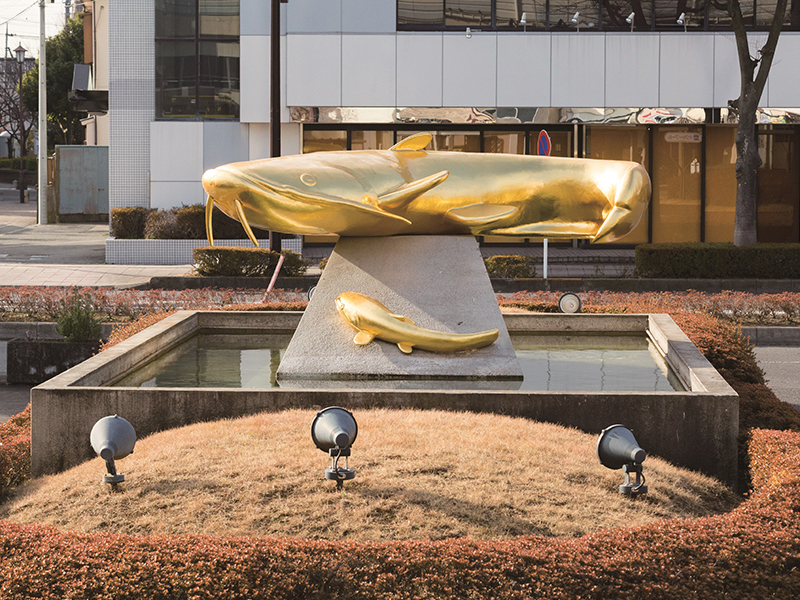
This monument of a golden catfish, the symbol of Yoshikawa City, is proudly displayed in the Yoshikawa Station South Exit rotary on the JR Musashino Line. It welcomes visitors to Yoshikawa City, which promotes itself as the "home of the catfish." It was created by Kazumi Murose, a lacquer artist considered a "national living treasure," and was installed on May 9th, 1995.
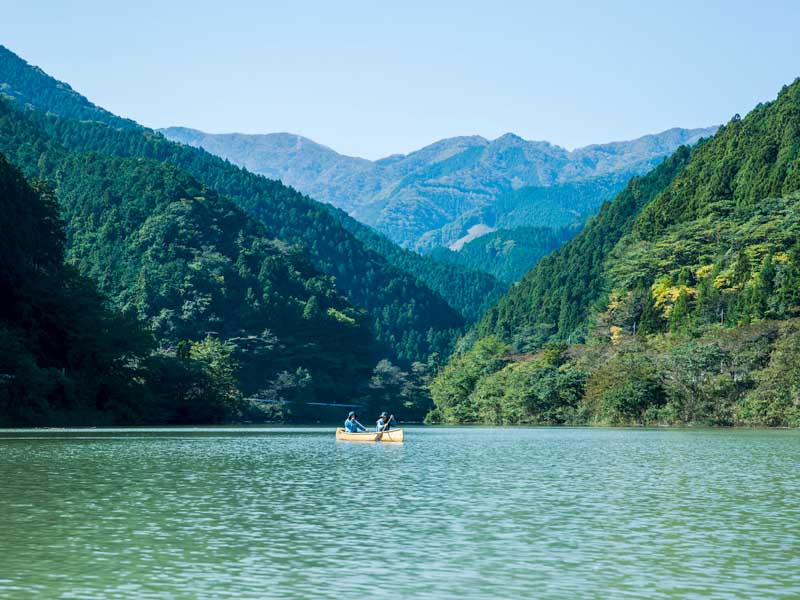
Surrounded by splendid nature, this is a factory where you can build canoes with the local Nishikawa timber. You can also rent canoes and try them out before building your own. Or just stop by if you're simply looking to have some fun in the river!
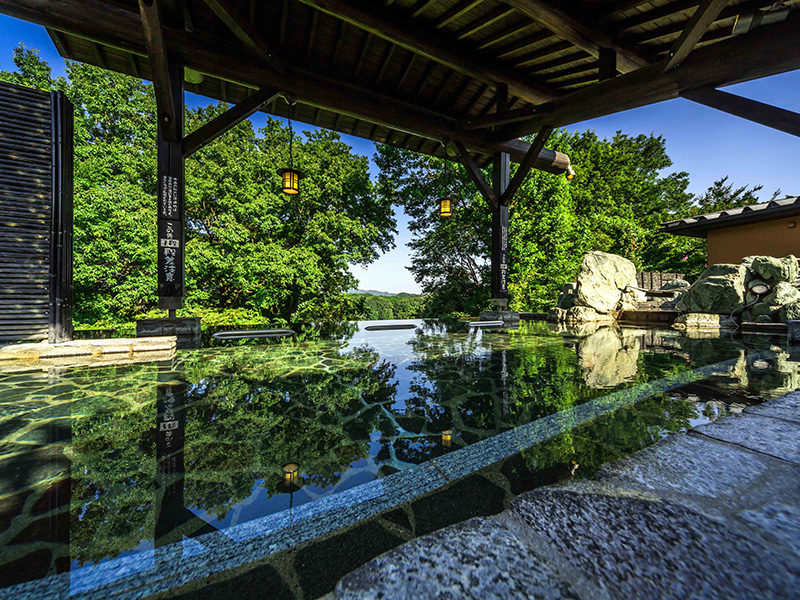
With low alkaline natural hot springs similar to a "Bijin no Yu" (beauty bath), the unisex large-scale outdoor bath, “Onnetsubō," overlooking Lake Miyazawa and the Chichibu Mountains is particularly popular! At the Four Seasons Buffet, “Kohansaryō," you can enjoy cuisine featuring locally harvest seasonal vegetables while taking in the view. ※ This is a facility for those older than elementary school. Preschoolers and younger are not allowed to enter.

A complex where visitors can experience Scandinavian culture. Rent a private tent sauna at the Sauna Club, enjoy a Scandinavian-style Kokko BBQ, or shop for regional specialties. In the spring of 2021, a glamping field for up to 10 tents was added to the facility. Feel free to stay the night or simply enjoy a day of fun at this popular location!
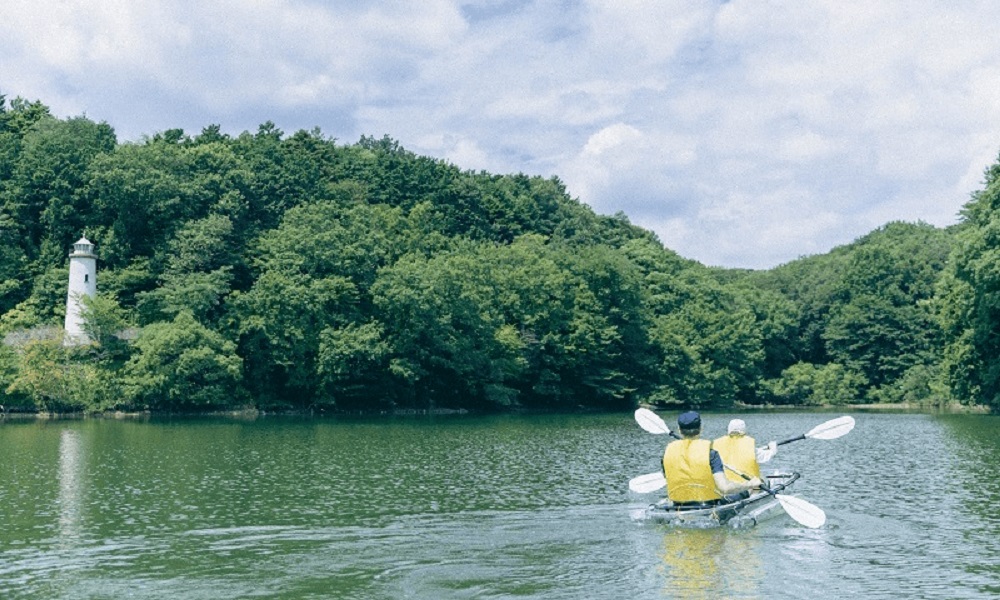
You'll spend a delightful time with family and friends at Metsa Village, whether shopping for Nordic brand goods that give you a taste of Nordic lifestyle, perusing handicrafts at the market, enjoying a Nordic meal at the restaurant, taking part in arts and crafts workshops, renting a boat to cruise the lake, or through various seasonal events. There's plenty to experience at this lakeside forest.
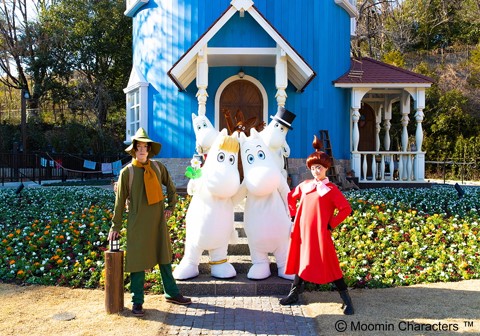
At the Moominvalley Park in Saitama Prefecture, based on the popular creation, ‘Moomins,’ by Finnish author and artist Tove Jansson, you can immerse yourself in the delightful world of Moomin and its popular characters. The first theme park of its kind outside of Finland, it was opened in March 2019 in Hanno, Saitama, and is easily accessible from Tokyo via train. There are four main attraction areas, featuring a variety of theater venues, a large three-story museum, a playground with Moomin landmarks that appear in the story, delicious restaurants, a cafe, and the world’s largest Moomin store! For additional fun, outside Moominvalley Park lies the Metsä Village, where visitors can enjoy a Nordic experience with shopping and dining options, relax around Lake Miyazawako in comfortable outdoor seating viewing the lake and surrounding forest, or take part in various hands-on activities. At Moominvalley Park, there’s fun to be had for everyone!
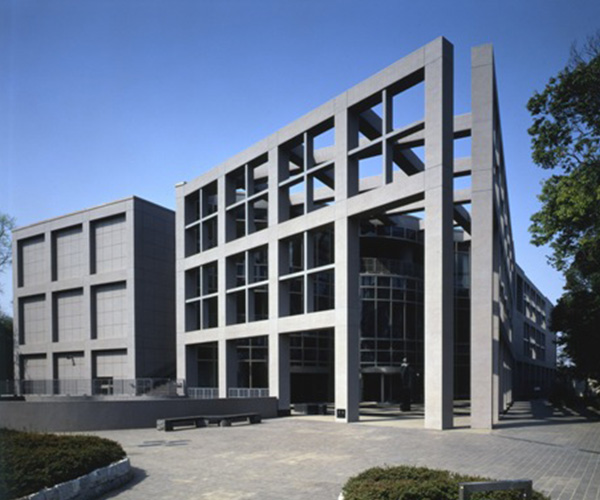
The Museum of Modern Art Saitama (MOMAS) was opened in the rich greenery of Kitaurawa Park in 1982. A collection of superb art pieces is on display, with works from artistic masters such as Monet, Chagall, Picasso and modern Japanese artists. Special exhibitions with unique themes are frequently held, and there are many "good design" chairs that can be used freely. In addition, there are museum concerts, lectures, and workshops for both parents and children to enjoy. There are also museum shops with select art books and goods, along with a restaurant serving authentic Italian food, making the museum an ideal place for both fun and comfort. (For more information regarding the facility, please check the URL below.)
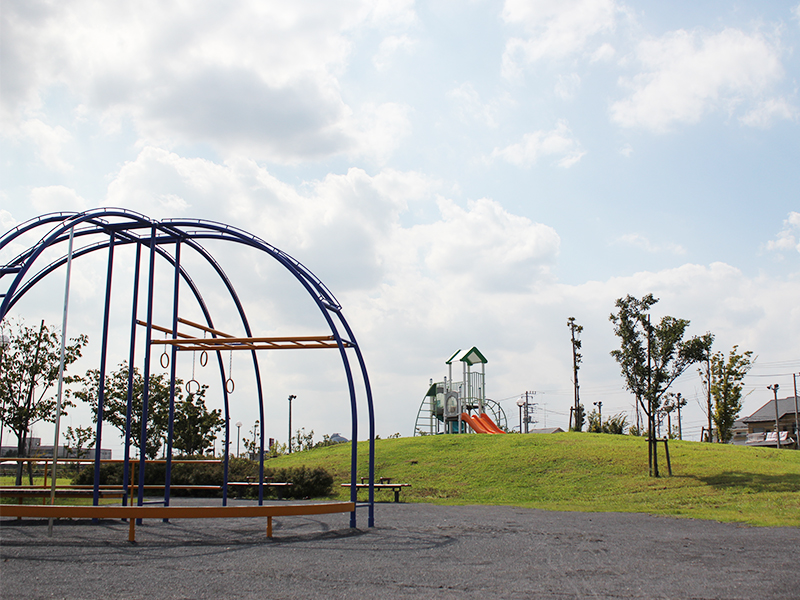
Located only a 5-minute walk from Yoshikawaminami Station on the JR Musashino Line, this is the largest park in Yoshikawa City. From Miharashi Hill, you can see the adjacent pond and multipurpose plaza. There is also a playground with a variety of equipment which can be enjoyed by both children and adults.
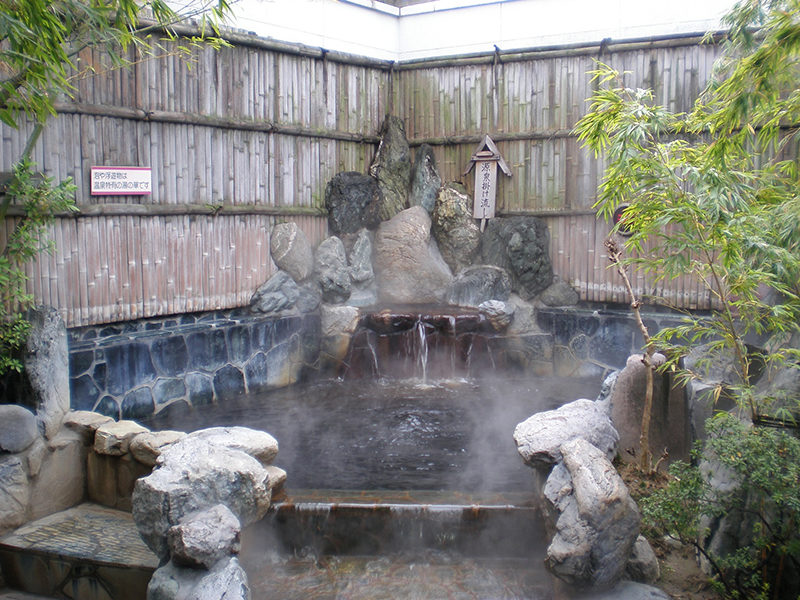
This black water (kuro-yu) hot spring, distinct to the Kanto area, is located along the National Route 4 bypass. In addition to the hot spring baths flowing directly from the source, you can enjoy jet baths, salt saunas, high-temperature saunas, medicated baths and utaseyu (striking water baths).
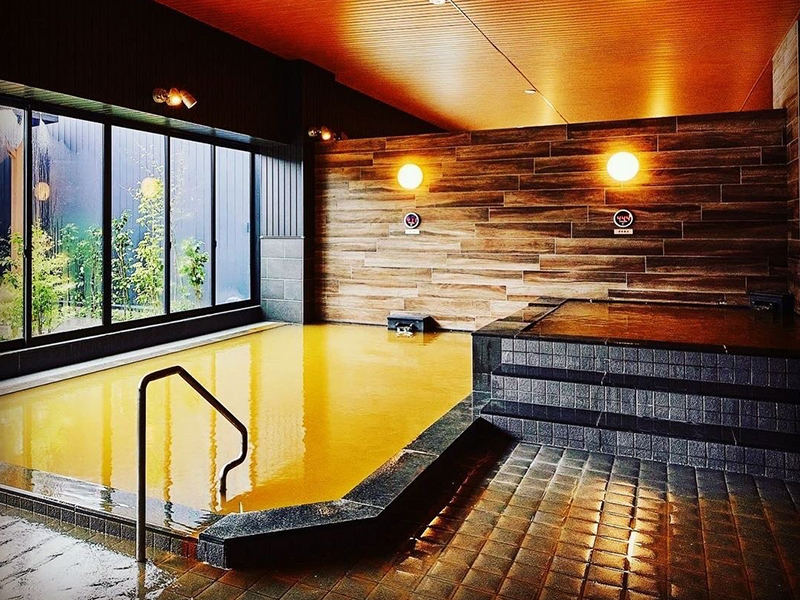
This hot spring was opened at Aeon Town Yoshikawa Minami in June 2021 under the theme ''deliciousness, happiness, beauty, and health." There are three types of indoor baths, a reclining bath and an outdoor bath. After taking a bath, you can enjoy sushi produced by Kanazawa Maimon and sweets by chocolatier Hironobu Tsujiguchi of Le Chocolat de H in the food court attached to the spa.
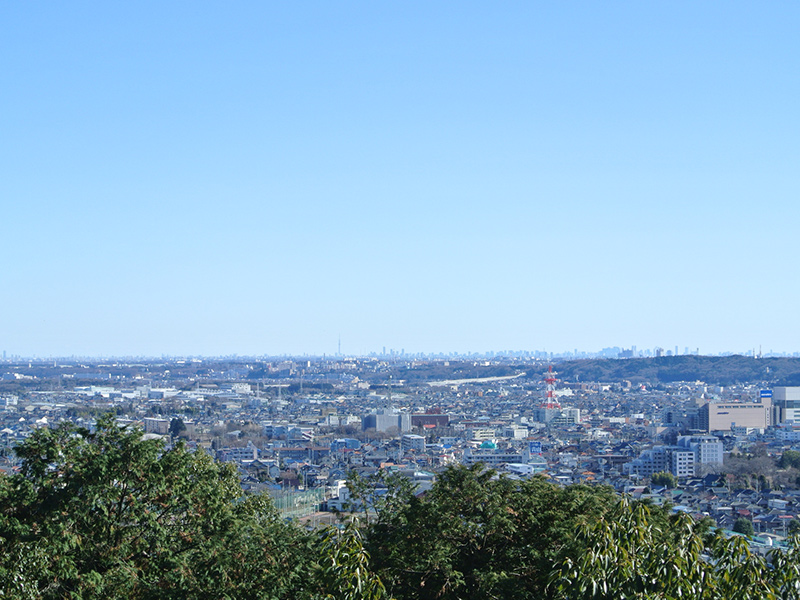
Given its name after Emperor Meiji climbed to the summit, Mt. Tenran (imperial inspection) is the first scenic spot designated by the prefecture. Despite its low elevation, Hanno City can be seen below. The cherry blossoms in spring, azaleas, and autumn leaves make this mountain a beautiful starting point to the Okumusashi Long Trail.
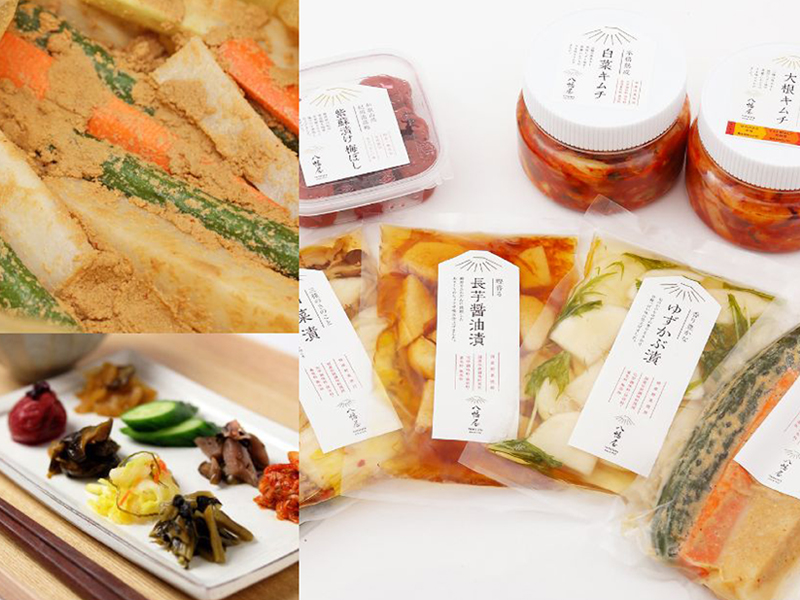
A fermentation theme park run by Pickles Corporation, a tsukemono (Japanese pickles) maker. There are select shops for fermented foods, cafes, restaurants, and workshops available. You can eat dishes made with koji (rice with added fermentation culture) and lactic acid bacteria, and buy pickles and fermented foods carefully selected from all over the country.
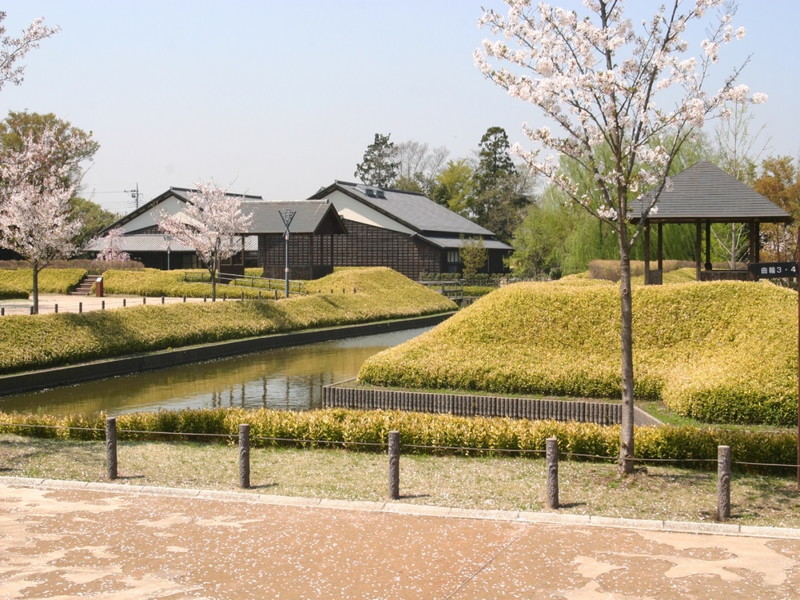
The Nanbata Castle Park Museum is located in the middle of a long and narrow park, straddled by divisions of east and west sides, with a replica of the Nanbata Castle in the "Shiroato Zone" on the east side, and relocated kominka (old residences) in the "Kominka Zone" on the west side. In the "Shiroato Zone" are the restored enclosure, water moat and earthwork mounds of the Nanbata Castle from the Sengoku Period. Visitors can enjoy the changing seasonal scenery of the water lilies and other wetland plants growing in the water moat. In the “Kominka Zone” are two relocated and restored early Meiji period private residences and the gate of a townhouse that are designated city cultural properties. Annexes such as a granary (kokugura), library (bunkogura) and barn (naya) were newly built to replicate Fujimi City's nostalgic farmhouse scenery. In the granary, visitors can watch videos about local performing arts and the restoration of the old farmhouses. The regional exchange facility, "Chokkura," is also connected to the building, where visitors can purchase local produce and souvenirs.
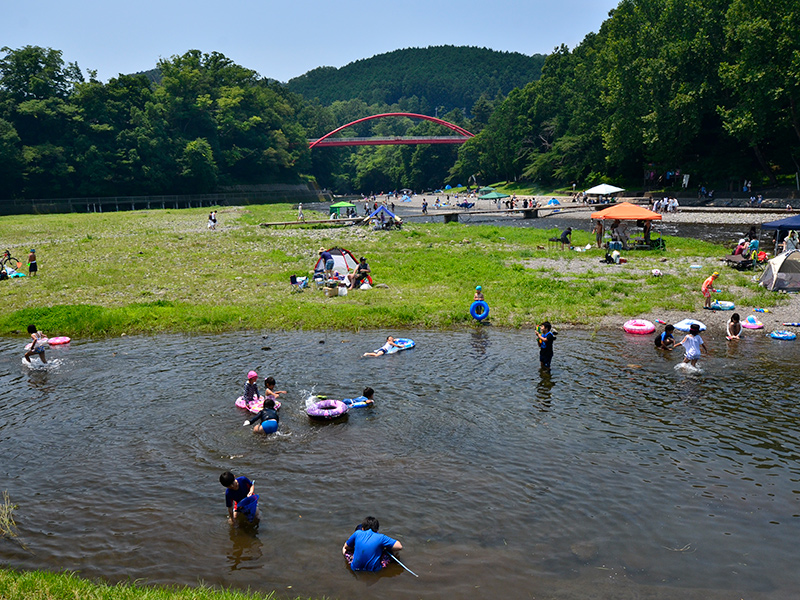
Just a close 15 minute walk from the station, this popular Hanno City tourist spot is filled with people in the summer. The contrast of the deep green trees with the red Wareiwa Bridge provides an ideal photo background, making this the perfect riverside spot for capturing fun summer memories. Rental BBQ equipment and ingredients are also readily available at nearby stores, so revelers can arrive empty-handed.
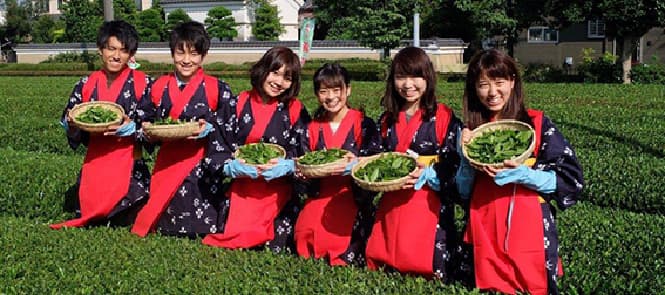
As celebrated in a traditional Sayama tea picking song: "Shizuoka for color, Uji for aroma, and Sayama for flavor." Sayama tea ranks among Japan's top three teas, alongside Shizuoka tea and Uji tea. At Miyanoen, visitors can enjoy hands-on experiences that bring them closer to Sayama tea. Their tea leaf-picking experience includes wearing traditional red aprons (available for rent), tasting the tea you've freshly picked, sampling unique tea leaf tempura, and creating matcha art - all wonderful ways to immerse yourself in both Sayama tea and Japanese tea culture.
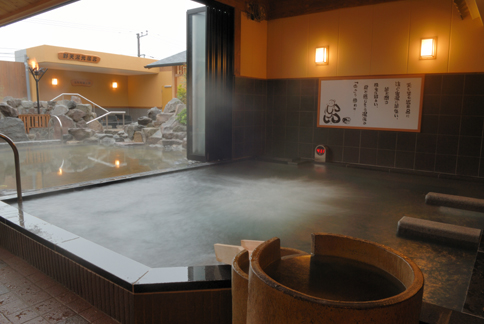
Enjoy natural hot spring open-air baths and Ganban yoku (hot stone baths) made from black silica, just a few of the ten unique baths prepared to wash your fatigue away. Enjoy a relaxing meal or foot bath surrounded by a traditional townscape that will make you feel like you have traveled back in time. In addition, there are many refreshment rooms for massage and body scrub treatments, allowing for maximum leisure! Enjoy “healing and moisture” to your heart’s content.
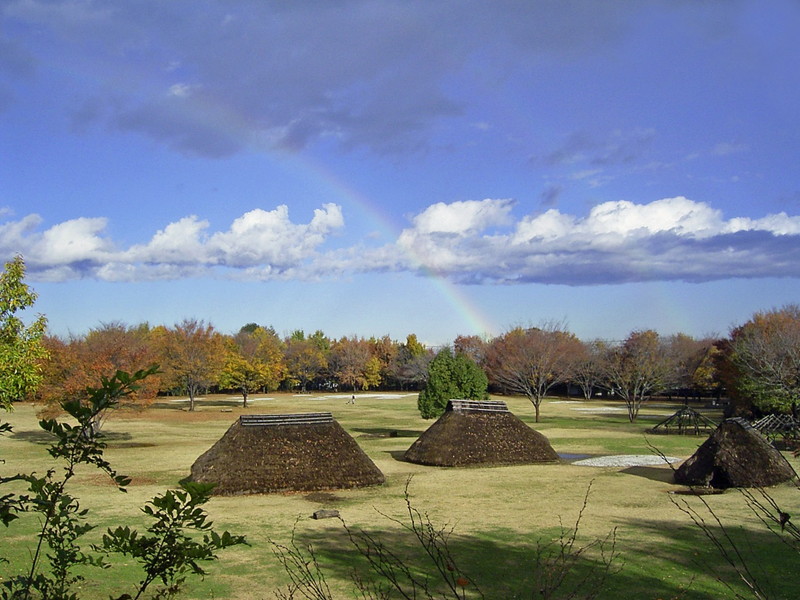
Mizuko Kaizuka Park covers roughly 40,000 square meters and was built to protect and utilize a historically designated site of midden (ancient waste collection spots) significant to the first half of the Jomon period (approximately 5500 to 6500 years ago). The size of the site represents the original ancient village, a path spanning 582 meters encircles the park, and 5 pit-houses (shelter houses built into the ground) and the Jomon era forest which surrounded the village have been restored. At the exhibition hall, excavated dwelling sites have been replicated, demonstrating how the ancient people lived at that time utilizing the midden. There is also an adjoining archive museum displaying artifacts unearthed from the city's ruins, with stone tools from the Paleolithic era roughly 30,000 years ago, designated cultural property Jomon pottery (nicknamed “flying squirrel-shaped pottery” ) unearthed from the ruins of Hazawa, an iron sword and a glass bead from the beginning of the Kofun period, and numerous other artifacts representing the primitive and ancient times of Fujimi City.
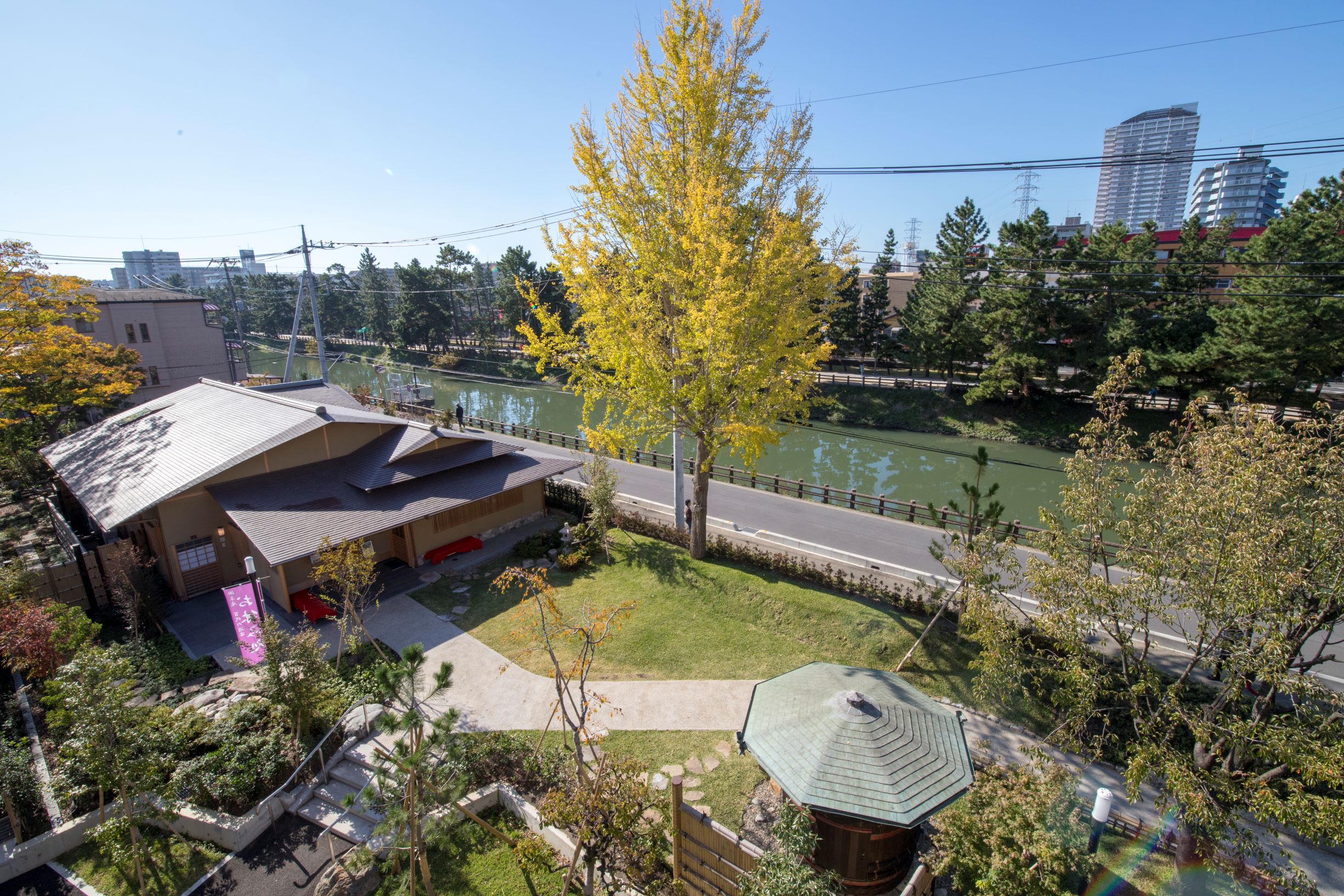
This single-floor wooden house, built using the 'Sukiya' architectural style, has been praised and written about by the Japanese literature researcher Donald Keene. The facility now serves as a place to introduce the Sōka area's culture of tea ceremony, flower arrangement, and classical instruments such as koto and shamisen. Furthermore, the facility is also open as a resting area where visitors can enjoy a cup of tea for a small fee.
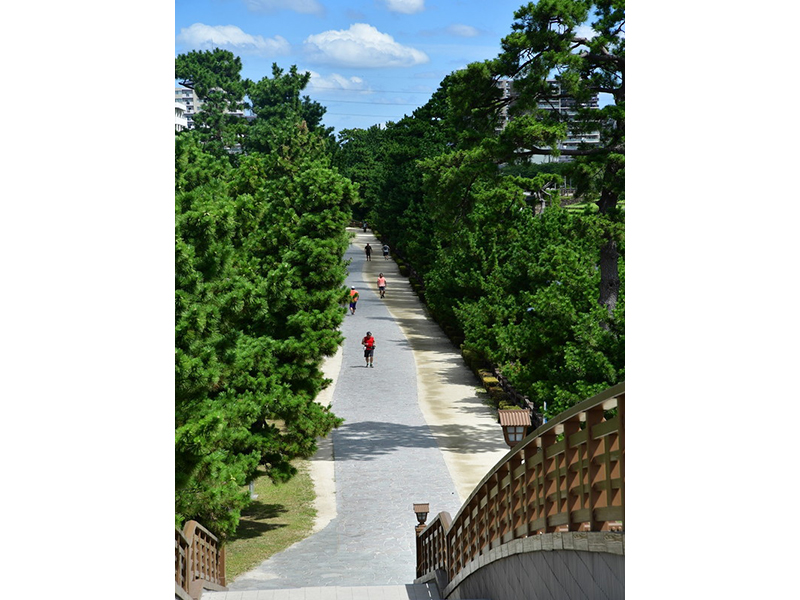
These twelve cities and towns and thirteen places of scenic beauty related to Matsuo Bashō’s “Oku no Hosomichi” have been recognized as influencing the scenery and lives of future generations, while preserving the elegance and atmosphere of ancient times. Collectively, these areas have been appointed as one of the top scenic spots in the country.
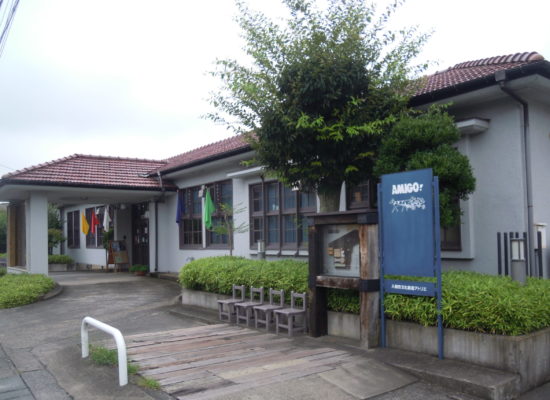
The Iruma City Cultural Creation Atelier is commonly known as “AMIGO!” In Spanish, "amigo" means “friend” or “fellow.” The name reflects the effort we put into providing enjoyable activities for everyone at our facility. The exclamation point emphasizes the sharing of information and forming of new friendships! We strive towards our goals with passion and a hard-working attitude, leading activities related to dyeing and textiles.

This old rest facility made from local cedar and cypress wood was renovated and reopened on May 16th, 2018 as "Oyasumi Dokoro" (the rest spot). They sell local products such as Sōka Senbei (rice crackers) and provide plenty of tourist information, making it a great starting place for any traveler in the area.

A park inspired by the world of Scandinavian fairy tales. Unique buildings that tickle your imagination stand on park grounds overflowing with greenery. Play freely in nature among the refreshing breeze and dappled shade in this relaxing space for everyone.
This site uses cookies to improve the user experience. If you continue to browse, you consent to the use of cookies on this site. Accept
CONTACT
